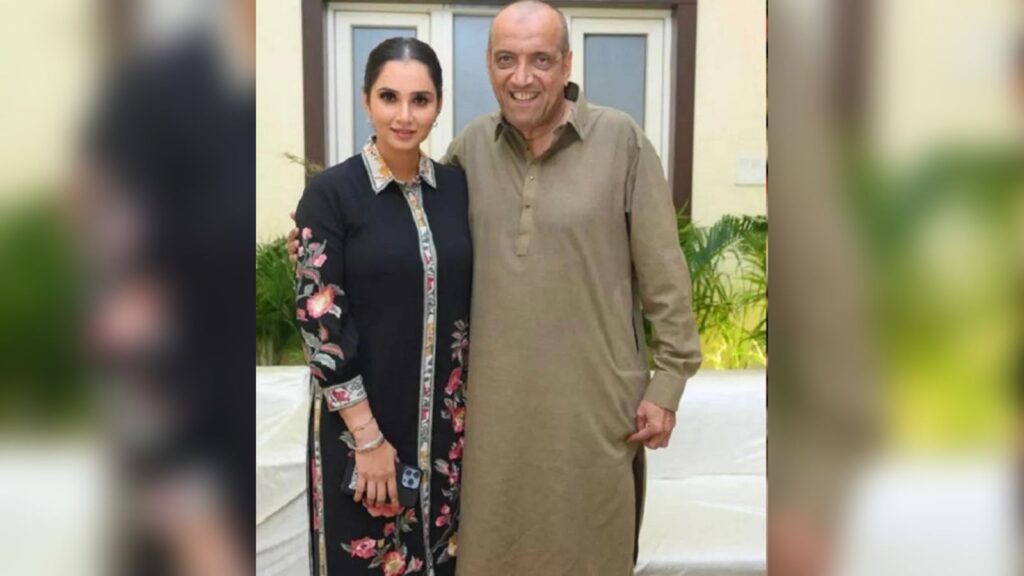
By Boria Majumdar
As Sania Mirza settles into a commentary career, the belief is firmed up that we won’t ever have another like her. She was much like Aamir Khan’s character in Three Idiots — a once in a lifetime phenomenon, who came as a breath of fresh air, for Indian tennis.
And that’s what begs the question: ‘How did Sania happen?’ More questions follow. ‘What made Sania the Sania?’; ‘How could a middle-class family from Hyderabad with no background in elite sport produce a champion?’; ‘What’s the back-story?’; ‘How did Imran Mirza help Sania become what she is?’ These questions ring pertinent on Father’s Day.
Here’s Sania and her take on these. “Like I have alluded to in my autobiography, in the summer holidays, we went to Bengaluru to spend a few weeks with my father’s uncle. It was Wimbledon time and my parents were watching Steffi Graf play Jana Novotna in the 1993 women’s final. When I walked into the room, dad looked at me indulgently and said to mom, ‘Hey, what if someday Sania becomes a professional tennis player and gets to play at Wimbledon on Centre Court?”
That’s where this story began. And it didn’t start on an encouraging note. “Everyone present in the room chuckled at the outrageous suggestion. Those days, it was unthinkable, the idea of playing tennis seriously and making a career out of it, much less being a world-class women’s player. But my mother, partly because she was naive about the game, took to the idea. She went teary-eyed and a smile brightened her face.”
The parents played a huge part and Nasima (Sania’s mother) knew what Imran was trying to get at. “Mom knew exactly how important sport was to dad,” said Sania. Former India cricket captain Ghulam Ahmed was related to Imran. “Mom understood little about tennis then, but having watched the excitement of Wimbledon on TV, she knew what a major achievement it would be if her daughter made it to the famed Centre Court. ‘If Sania has a chance of playing at Wimbledon, I won’t leave a stone unturned to make it happen,’ she said, rather prophetically.”
“It is exactly what Nasima did,” says Imran. “That’s Nasima for you.”
While Imran was the hands-on coach, Nasima was the protective shield. Not once did Imran say a word to Sania or show dejection after losing a close match. In fact, winning or losing was par and he was happy if she put in her best effort.
“This is what made Sania the player she is. She was able to absorb pressure knowing it was her job to give her best. The result was not something she ever worried about and it allowed her to play freely during critical points,” says Imran.
“Producing a top quality tennis player from our background wasn’t easy. You needed to think out of the box. And that’s where Nasima came in. She had travelled and worked in London and Dubai before marriage and hence, was a very confident world traveller. This not only enabled her to travel with Sania (when she was a junior) but having worked in the travel industry, she was a wizard at getting flight bookings at amazing prices at last moments, which is exactly what we needed,” says Imran.
“When we were initially travelling by train for junior AITA events, if these were national tournaments, we were entitled to 80% discount and she would spend upto 6-7 hours in queues to get the bookings done at discounted prices for the entire two-month circuit. Also, Nasima loved spending on clothes till Sania got into tennis. After that, she virtually gave up spending on herself and most of what we earned went into Sania’s tennis expenses.”
But what made him the coach that he turned out to be? Without much background, how is it that he helped mentor an international-level player all through her career?
Having watched clips of matches where Imran had to run in to court when the chips were down, it is fair to say that while he was never a great tennis player, he had a very sharp eye and an analytical brain for the game.
In his words, “While Sania was developing as a tennis player, I had the good fortune of meeting some of the world’s best coaches and that gave me the confidence to coach Sania over the last decade and more. I have worked alongside Tony Roche (while he was simultaneously coaching Roger Federer), the late Bob Brett (who coached Boris Becker and Goran Ivanisevic among others) and Sven Groeneveld (who coached Maria Sharapova). They all added to Sania’s game and I learnt the finer points and nuances from these coaches. I used that knowledge to adapt those techniques I had learnt from them, to suit the Indian body. This is where I believe I was able to get the best out of Sania as a tennis player.”
Follow Revsportz for latest sports news



